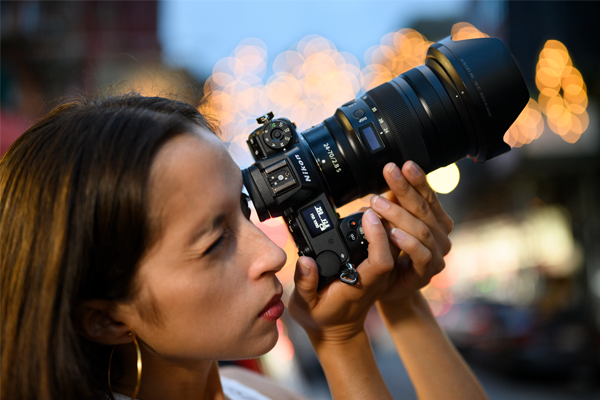Overnight Nikon announced the next generation of their Z series of cameras. The Z 7 and Z 6 were an excellent debut by Nikon into the full-frame mirrorless camera market back in late 2018. The release of these new cameras promises to be just as exciting, with the specs indicating that Nikon have made a concerted effort to address the biggest issues that were raised with the first generation. Let’s take a look at the Nikon Z 7II and Z 6II.
Z 6 II

One big change Nikon has implemented for the second iteration of both Z series cameras is to double up on some of their important core features. Both the Z 6II and Z 7II have 2 image processors and 2 memory card slots.
With 2 EXPEED 6 image processors, the Z 6II is a much faster camera than the Z 6. The Z6II has quicker image processing and a buffer capacity 3.5 times larger than the Z 6. Dual processors have also helped increase the high-speed shooting capabilities of the camera. The Z 6II can handle 14fps continuous shooting at full resolution, up from 12fps on the Z 6.
Like the first generation, the Z 6II is remarkably well suited to both photography and video. The camera can record 4K UHD 30p video with full pixel readout, with a firmware update promised in February 2021 that will allow 4K UHD video recording at 60p. Additionally, when outputting to an external recorder like the Atomos Ninja V, you can record 10-bit N-log or HDR (HLG) video. A firmware upgrade is available (for purchase) that allows you to output 12-bit ProRes Raw via HDMI to a compatible external recorder.
As with the Z 6, the Z 6II is compatible with Nikkor Z lenses, but can also use F-mount lenses with the FTZ adapter. However, the ability to reverse the direction of the focus ring on Z lenses so it matches non-Nikon lenses adds a nice touch. Although a Z lens is still required to achieve 5-axis image stabilization (3-axis with other lenses).
Other updates include additional autofocus options, such as improved eye-detection AF, and compatibility with the new MB-N11 battery pack that allows for comfortable vertical shooting and nearly doubles battery performance.
Z 7II

One of the biggest complaints about the first generation of the Z series was that both cameras only had a single CFexpress/QFD memory card slot. The addition of a second slot for UHS-II SD cards on the Z 6II and Z 7II is a massive win. Whether you enjoy the additional recording space, or like to dual record for peace of mind, two memory slots has become the standard for full-frame cameras of this calibre.
While both cameras have dual EXPEED 6 image processors, only the Z 6 II can reach 14fps of continuous shooting at full resolution. The Z 7II only goes up to 10fps, up from 9fps on the Z 7. Other than this, the Z 7II tends to have all the same new features as the Z 6 II, including the ability to record 4K UHD video at 60p and additional autofocus options.
Like their predecessors, the key difference between the Z6 II and Z7II is their sensors. The Z 7II has Nikon’s highest resolution sensor, a 45.7MP BSI CMOS sensor with no optical low-pass filter. This translates to richer, higher quality imagery, but also means larger file sizes. The Z 7II also has a 493-point Hybrid AF versus the 273-point AF on the Z 6II, though this is directly related to the difference in sensor size between the two cameras.
Summary
The key upgrades in both the Nikon Z 7II and Z 6II are the dual EXPEED 6 image processors and the dual memory card slots. Having 2 processors drastically enhances the performance potential of both cameras, while 2 two card slots are a direct response to consumer demand. Other improvements such as additional autofocus options help the 2nd generation cameras stand out as true upgrades.










